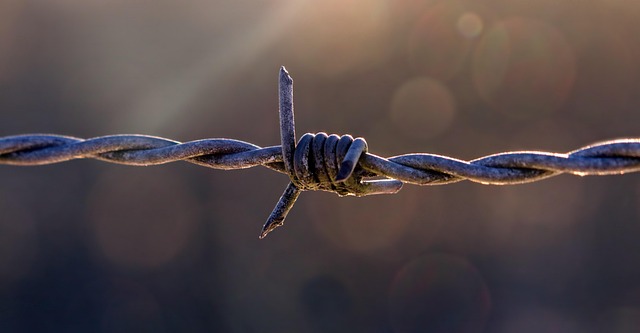Vinyl Fence Installation Contractors in New Bedford, MA: A Comprehensive Guide
Are you considering enhancing your New Bedford property with a stylish and durable vinyl fence? This guide is your ultimate resource for navigating the installation process. From understanding local regulations to selecting the perfect contractor, we cover it all. Learn about the benefits of vinyl fencing and explore the step-by-step installation process. Additionally, discover essential maintenance tips to ensure your new fence stands the test of time. Whether you’re a homeowner or property manager, this article will empower you to make informed decisions for your New Bedford project.
- Understanding Vinyl Fence Installation in New Bedford
- Choosing the Right Contractor for Your Project
- Permits and Regulations: What You Need to Know
- The Installation Process: Step-by-Step Guide
- Maintenance Tips for Long-Lasting Fences
Understanding Vinyl Fence Installation in New Bedford
In New Bedford, MA, vinyl fence installation has become a popular choice for homeowners and businesses alike due to its durability, low maintenance, and aesthetic appeal. Vinyl fences are made from rigid PVC (polyvinyl chloride) material that is resistant to rot, rust, and damage from extreme weather conditions. This makes them a long-lasting solution compared to traditional wooden fences.
During the installation process, skilled contractors follow specific steps to ensure the fence not only looks good but also functions properly. This includes measuring the perimeter of the desired area, digging holes for posts, setting the posts in concrete, attaching panels or pickets, and finally sealing all joints with caulk for added protection against elements. The result is a sturdy, attractive barrier that can enhance property value and provide privacy for years to come.
Choosing the Right Contractor for Your Project
When selecting a vinyl fence installation contractor in New Bedford, MA, it’s crucial to find a company with a proven track record and expertise in your specific project type. Look for contractors who offer customization options to match your unique design preferences and property layout. Online reviews, local recommendations, and licensing verification are essential steps to ensure you’re hiring a reputable professional.
Consider their portfolio, insurance coverage, and warranty information before making a decision. Reputable contractors will provide transparent estimates, clearly outlining costs and timelines. Effective communication is key; choose a contractor who listens attentively to your needs and offers guidance throughout the installation process.
Permits and Regulations: What You Need to Know
When planning a vinyl fence installation in New Bedford, MA, understanding permits and regulations is crucial. Before beginning any construction project, homeowners must check with local authorities to obtain necessary permits. These permits ensure compliance with building codes and zoning regulations, which can vary significantly from neighborhood to neighborhood. Failure to secure the right permits can result in penalties, delays, or even the requirement to dismantle and redo the fence installation.
Local governments often have specific guidelines regarding fence height, materials, and placement, especially when it comes to property lines and neighboring structures. Vinyl fence contractors should be well-versed in these regulations, as they are responsible for ensuring their work adheres to local laws. Homeowners can expect to go through a permitting process that involves submitting applications, providing detailed plans of the proposed fence, and possibly attending hearings. Being proactive and informed about these requirements will help ensure a smooth installation process.
The Installation Process: Step-by-Step Guide
The installation process for a vinyl fence typically involves several steps to ensure a secure and durable barrier. It begins with careful measurement and planning, where contractors survey the area to be fenced and determine the best layout. This includes marking the perimeter and identifying any unique features or challenges on the site.
Next, the contractors prepare the ground, clearing it of debris and leveling it if necessary. Post holes are then dug along the intended fence line, which serves as the foundation for the fence posts. The posts are set in place, often with concrete to secure them firmly. Once the posts are in, the horizontal rails are attached, providing support for the panels. The vinyl fence panels are then hung on these rails, ensuring they fit snugly and align correctly. Finally, gates and any additional accessories like latches or hinges are installed, completing the structure.
Maintenance Tips for Long-Lasting Fences
Regular cleaning and inspection are key to maintaining your vinyl fence’s longevity. A simple brushing with a soft-bristled brush and mild detergent can keep the fence free from dirt, leaves, and other debris that may cause damage over time. Avoid using abrasive cleaners or power washers, as they can strip away the protective coating of the vinyl. Inspecting your fence periodically for any signs of cracking, warping, or rot is also crucial. Addressing small issues early on can prevent them from becoming more significant problems later.
Additionally, keeping vegetation at bay is essential. Overgrown plants or trees can cause pressure points and damage to the fence structure. Regular trimming will ensure your vinyl fence remains intact and looks its best for years to come. Finally, consider applying a fresh coat of protective coating every few years to replenish the fence’s shine and safeguard against UV rays, extreme weather conditions, and other environmental factors that may impact its durability.
